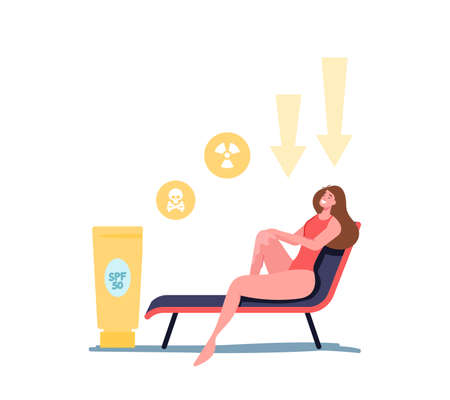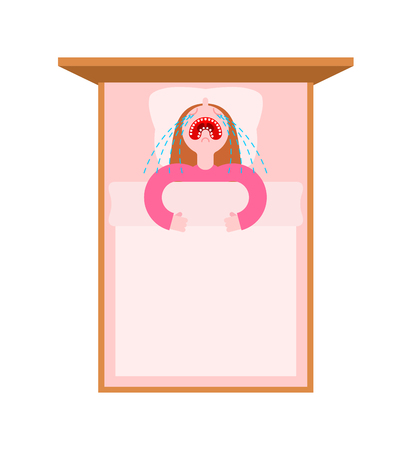Introduction to Detox Baths and Saunas in the UK
In recent years, detox baths and saunas have witnessed a significant resurgence across Britain, becoming an integral part of contemporary wellness routines. This renewed interest can be traced to a broader shift towards holistic self-care and preventative health practices among UK residents. With growing public awareness of stress management, immune support, and mental wellbeing, many Britons are turning to traditional yet revitalised bathing rituals as accessible methods for supporting overall health. From London’s modern spa facilities to historic bathhouses in cities like Bath and Harrogate, these practices now blend centuries-old traditions with current scientific insights. The popularity of detox baths and saunas is further fuelled by the UKs vibrant wellness culture, which emphasises mindfulness, natural therapies, and sustainable living. As such, these rituals are increasingly seen not only as moments of relaxation but also as purposeful strategies within a balanced lifestyle—reflecting both the heritage and evolving health aspirations of people across the United Kingdom.
2. Historical Roots and Cultural Significance
Detox baths and sauna traditions in the UK are steeped in a rich tapestry of history, reflecting centuries of evolving health beliefs and social practices. These rituals not only provided hygiene and relaxation but also played pivotal roles in community life and wellbeing across different eras.
Roman Baths: The Foundations of Public Bathing
The origins of British bathing culture can be traced back to the Roman occupation, which introduced sophisticated bathhouses across sites such as Bath and Chester. These complexes offered heated rooms, cold plunges, and communal spaces, laying the groundwork for public wellness facilities. The Romans believed in the therapeutic properties of mineral waters, and many UK towns with ‘Bath’ or ‘Spa’ in their names owe their heritage to these ancient roots.
Victorian Spa Culture: Social Refinement and Medical Belief
The Victorian era witnessed a resurgence of spa culture, transforming bathing into a fashionable pursuit among the upper classes. Towns like Harrogate, Buxton, and Royal Leamington Spa flourished as people flocked to drink and bathe in mineral-rich waters, guided by the belief that these practices could cure ailments ranging from rheumatism to digestive complaints. This period also saw the rise of Turkish baths—steam-based facilities inspired by Ottoman traditions—which became popular urban retreats.
Influence of Nordic Sauna Traditions
In recent decades, Nordic sauna customs have influenced modern British wellness routines. Traditional Finnish saunas—characterised by dry heat and periodic water infusion onto hot stones—are now common features in gyms, spas, and even private homes across the UK. This adoption aligns with contemporary interest in holistic health and stress reduction.
Timeline Overview: Key Developments in UK Bathing Culture
| Era | Key Practices | Cultural Impact |
|---|---|---|
| Roman Britain (43–410 AD) |
Public bathhouses, mineral springs |
Foundation for communal hygiene and hydrotherapy |
| Victorian Era (1837–1901) |
Spa towns, Turkish baths |
Social refinement, health tourism boom |
| Modern Day (20th–21st Century) |
Nordic saunas, home spas |
Mental wellness focus, integration into daily life |
This enduring legacy highlights how detox baths and saunas have evolved from ancient medical beliefs to contemporary wellness trends in the UK, continuing to shape public health attitudes and lifestyle choices today.

3. The Science Behind Detoxification
Detox baths and saunas have long been promoted for their cleansing properties, but what does the science say about their actual physiological effects? Evidence-based research has begun to unravel the mechanisms behind these traditional practices, especially in the context of heat exposure, sweating, and hydrotherapy. In the UK, public health guidelines emphasise a cautious yet open-minded approach towards such wellness trends.
The Role of Heat and Sweating
When exposed to elevated temperatures in saunas or hot baths, the body undergoes several physiological changes. Core body temperature rises, prompting increased circulation and inducing sweat production. Sweating is often cited as a natural detoxification method; however, scientific evidence suggests that while trace amounts of heavy metals and toxins can be excreted through sweat, the kidneys and liver remain the primary organs responsible for detoxification. Research published in peer-reviewed journals indicates that regular sauna use may improve cardiovascular function and reduce blood pressure, which are important considerations for overall health in British adults.
Hydrotherapy’s Impact on the Body
Hydrotherapy—using water at varying temperatures—has been shown to enhance relaxation, alleviate muscular tension, and potentially aid in pain management. Studies conducted in Europe have demonstrated that immersion in warm water can promote parasympathetic nervous system activity, supporting stress reduction and better sleep quality. These findings align with recommendations from UK health practitioners who advocate for non-pharmaceutical approaches to stress relief where appropriate.
UK Public Health Perspective
The NHS recognises some benefits of sauna and bath use for certain populations but advises caution for individuals with cardiovascular conditions or those who are pregnant. The emphasis is on moderation and integrating these practices within a broader framework of healthy living. While there is growing interest in wellness therapies among Britons, public health experts underscore that detox baths and saunas should complement—not replace—evidence-based medical treatments. Ongoing research continues to clarify the potential risks and rewards associated with these popular wellness rituals.
4. Modern Practices and Popular Methods
In the UK, detox baths and saunas have evolved significantly, blending traditional techniques with modern innovations to cater to a wellness-conscious population. Today, spa centres, gyms, and even private homes offer a wide range of options for those seeking the reputed benefits of detoxification. Below, we detail the most popular contemporary approaches and methods currently favoured across Britain.
Popular Types of Detox Baths and Saunas
| Type | Description | Typical Ingredients/Technologies | Common Settings |
|---|---|---|---|
| Steam Rooms | Heated rooms with high humidity designed to open pores and promote sweating. | Water vapour, essential oils (eucalyptus or mint), tile or stone interiors. | Gyms, spas, leisure centres. |
| Infrared Saunas | Saunas using infrared heaters that emit radiant heat absorbed by the body directly. | Infrared panels (near, mid, or far-infrared), wooden cabins (often cedar). | Wellness clinics, boutique gyms, private homes. |
| Epsom Salt Baths | Baths enriched with magnesium sulphate (Epsom salts) believed to soothe muscles and support detoxification. | Epsom salts, warm water, optional essential oils (lavender or rosemary). | Home bathrooms, some spa treatments. |
| Traditional Finnish Sauna | Dry heat sauna using heated stones; water can be added for steam bursts. | Heated rocks, wooden benches (usually pine or spruce), water bucket and ladle. | Spa resorts, upmarket gyms. |
| Aromatherapy Baths/Saunas | Bespoke experiences combining heat with therapeutic-grade essential oils to enhance relaxation and well-being. | Variety of essential oils (chamomile, bergamot), steam or dry heat. | Spa retreats, specialised wellness studios. |
Contemporary Ingredients and Technologies in Use
The UK market is distinguished by its openness to both natural ingredients and advanced technologies. Epsom salts remain a staple in home bath rituals due to their affordability and accessibility at local chemists. Essential oils—such as lavender, eucalyptus, and tea tree—are commonly added for their aromatherapeutic effects. In terms of technology, infrared saunas are gaining traction thanks to their purported ability to penetrate deeper into tissues at lower temperatures than traditional saunas, making them appealing for those sensitive to intense heat.
The Rise of Wellness Centres & Home Installations
The growing popularity of holistic health has led to an increase in dedicated wellness centres offering bespoke sauna experiences alongside other treatments such as massage and hydrotherapy. Additionally, more Britons are investing in home installations—ranging from compact infrared sauna pods to bath additives designed for regular use—which cater to busy lifestyles while supporting ongoing self-care routines.
Cultural Integration and Accessibility
A notable trend is the integration of these practices into British daily life. From accessible community leisure centres equipped with steam rooms to luxury spas offering tailored detox packages that include locally sourced ingredients, the approach is both pragmatic and inclusive. This reflects the UKs broader wellness culture: balancing tradition with evidence-based innovation for optimal health benefits.
5. Safety, Contraindications, and Best Practices
Detox baths and sauna sessions are popular wellness practices in the UK, but ensuring safety is paramount. Following evidence-based guidelines and NHS advice helps reduce risks while maximising health benefits.
Recommended Guidelines for Safe Usage
The NHS recommends limiting sauna sessions to 15-20 minutes, especially for first-time users or those with underlying health conditions. For detox baths, ensure water temperatures do not exceed 37-39°C (98-102°F), and always remain hydrated by drinking plenty of water before and after use. Individuals should avoid alcohol consumption prior to these therapies, as it may increase dehydration risk.
Potential Risks and Contraindications
Certain populations need to exercise extra caution. Pregnant women, young children, elderly individuals, and those with cardiovascular issues or unstable blood pressure should consult a healthcare professional before using saunas or engaging in prolonged hot baths. Heat exposure can exacerbate certain medical conditions, such as heart disease or respiratory disorders. Additionally, people taking medications that affect sweating or body temperature regulation should seek medical advice.
The Importance of Consulting Healthcare Professionals
Consulting with a GP or qualified healthcare provider is crucial prior to starting any new wellness regimen involving heat therapy. The NHS provides clear guidance on the safe use of both saunas and baths, tailored to individual health profiles common within the UK population. Personalised recommendations help prevent adverse events and ensure that these practices support rather than compromise overall well-being.
Best Practices for UK Residents
In addition to following established time and temperature limits, always monitor your body’s response during sessions—dizziness, shortness of breath, or palpitations are signs to stop immediately. Use UK-certified facilities that adhere to strict hygiene standards, and consider integrating rest periods between sessions for optimal recovery. By adhering to local guidelines and seeking professional input when necessary, UK residents can enjoy the rejuvenating effects of detox baths and saunas safely.
6. Integrating Detox Baths and Saunas into Everyday British Lifestyles
Adapting Ancient Rituals to Modern British Homes
While the UK’s climate and housing styles may not always lend themselves to traditional outdoor saunas or large spa facilities, there are practical ways to bring the benefits of detox baths and saunas into daily routines. Incorporating these practices safely and effectively requires a thoughtful approach that reflects both local wellness values and environmental realities.
Making the Most of Limited Space
British homes, particularly in urban areas, often have limited bathroom space. Compact sauna units—such as infrared sauna blankets or portable steam tents—offer practical alternatives for those without access to a dedicated spa room. For detox baths, deep soaking tubs are ideal but not essential; even standard bathtubs can be optimised by adding Epsom salts or essential oils to enhance relaxation and potential detoxification effects.
Seasonal Considerations
The UK’s cool and damp climate makes warm baths and saunas especially appealing during autumn and winter. However, it is important to moderate session frequency and duration according to weather conditions: shorter sessions may suffice during warmer months, while extended soaks or sauna use can be more comforting in colder periods. Hydration is key year-round, so always drink water before and after your session.
Safety First: Best Practices for Home Use
- Consult with a healthcare professional before beginning any new detox regimen, especially if you have underlying health conditions such as cardiovascular issues or skin sensitivities.
- Start with short sessions (10–15 minutes) and gradually increase duration as tolerated.
- Avoid using extremely hot water or excessively high sauna temperatures; British guidelines recommend keeping water temperatures below 40°C (104°F) for most adults.
- Ensure proper ventilation in bathrooms or sauna spaces to prevent mould and maintain air quality.
Cultural Wellness Values
The British approach to wellness often emphasises moderation, balance, and self-care. Rather than pursuing extreme detox trends, integrate baths and saunas as part of a holistic lifestyle that includes a balanced diet, regular exercise, adequate sleep, and stress management. Mindful rituals—such as enjoying herbal teas after a bath or practising meditation in the sauna—can further enrich the experience.
Community and Accessibility
For those who lack suitable facilities at home, many gyms, leisure centres, and boutique spas across the UK now offer sauna access or hydrotherapy suites. These venues provide opportunities for social connection—a value deeply rooted in British culture—while supporting personal wellbeing goals.
By adapting detox baths and saunas to fit the realities of UK living, anyone can enjoy their scientifically-backed benefits safely and conveniently within their own lifestyle framework.


